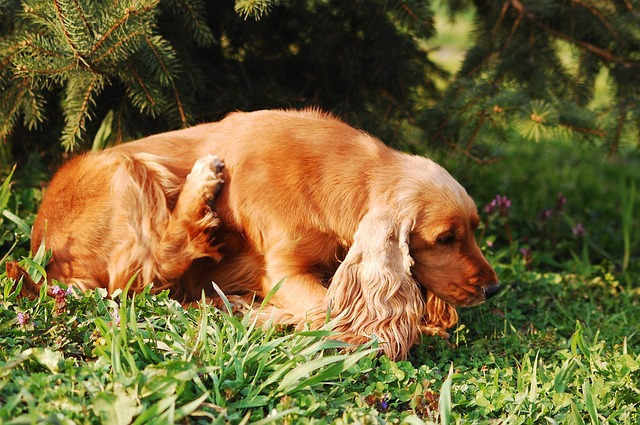Are you familiar with the signs and symptoms of yeast infections in dogs? Fungal yeast occurs naturally on all dogs’ bodies, but an overgrowth of Malassezia pachydermatitis or Candida can cause serious problems. The many different forms of yeast infections can cause not only discomfort and intense itching for your dog, but your dog scratching the itch can cause secondary infections. Yeast infections, which can affect the ears, urinary tract, mouth, or skin, are treatable as long as you follow the vet’s instructions closely, but its’s up to you to spot the symptoms and get your dog checked out.

Symptoms of yeast infections, based on the location of the infection:
Urinary tract:
-Cloudy, bloody, or foul-smelling urine
-Pain or straining while urinating
-Signs of pain or discomfort around bladder or genitals
-Accidents in the house
-Lack of energy
-Loss of appetite

Mouth
-Foul breath
-Drooling
-Painful mouth
-Trouble eating
-White coating on mouth or tongue (thrush)
Skin (usually affecting the ears, paws, genitals, or armpits)
-Licking, scratching, chewing, or head-shaking
-Bad odor
-Hair loss
-Red, inflamed, crusty, scaly, or greasy skin or hair
-Open sores, self-inflicted wounds, secondary infection
-Behavioral changes
Common causes of yeast infections:
-Reactions to certain medications
-Diabetes, Cushing’s disease, Addison’s disease, and other health issues
-Poor diet
-Weak immune system
-Hot, humid weather
-Parasites
-Food allergies
-Chemotherapy
-Skin irritation or infection
Treatments:
Treatment varies depending on the type and location of yeast infection and may include treating the underlying cause, using topical medications, or giving antifungal or anti-yeast medications.
(H/T: Dogtime)

